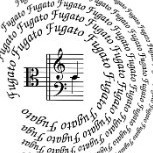Some thoughts on the M8.2 after 2-1/2 weeks
-
Recently Browsing 0 members
- No registered users viewing this page.
-
Similar Content
-
- 13 replies
- 988 views
-
- 9 replies
- 691 views
-
- 4 replies
- 302 views
-
- 21 replies
- 368 views
-
- 3 replies
- 259 views
-




Recommended Posts
Join the conversation
You can post now and register later. If you have an account, sign in now to post with your account.
Note: Your post will require moderator approval before it will be visible.